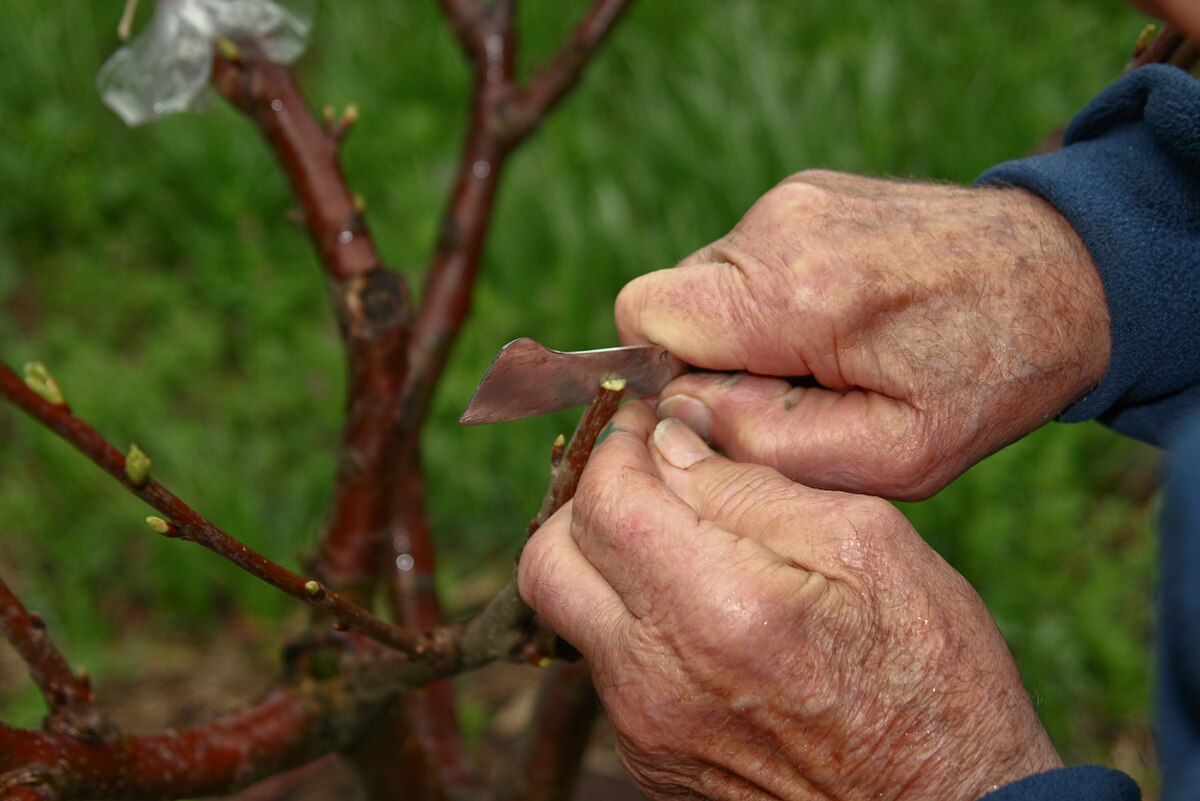Grafting: A Revolutionary Technique for Plant Propagation
Grafting is a remarkable horticultural technique used to join the tissues of two plants to grow together as one. It is a method that has been utilized for centuries to create stronger, healthier, and more productive plants, especially in the world of agriculture and horticulture. Whether you are a home gardener, a professional botanist, or a farmer, grafting offers a plethora of benefits for improving plant growth, resistance, and yields.
What is Grafting?
Grafting is the process of taking the scion (the upper part of one plant, typically a branch or stem) and joining it to the rootstock (the lower part, including the roots of another plant). Over time, these two parts fuse together and grow as a single, unified plant. The rootstock provides the foundation and strength for the plant, while the scion contributes specific traits, such as desirable fruit, flower, or leaf production.
This method of propagation is commonly used in commercial agriculture but can be applied in home gardens as well. It is an asexual reproduction method, meaning that the new plant will have the same genetic makeup as the scion.
Benefits of Grafting
Grafting offers several advantages over traditional planting methods:
1. Disease Resistance
One of the biggest reasons gardeners and farmers use grafting is to create plants that are more resistant to diseases. By selecting a rootstock that has been bred for disease resistance, the plant can avoid issues such as root rot, blights, or fungal infections. This is particularly useful for fruit trees and vegetables.
2. Improved Yield and Quality
Grafting often results in better quality fruits, vegetables, and flowers. The scion is chosen for its superior traits, which can include larger fruits, more vibrant flowers, or higher crop yields. Additionally, the rootstock often has a more efficient nutrient uptake system, which can further enhance the overall productivity of the plant.
3. Faster Growth
Grafted plants tend to grow more quickly and produce fruits or flowers sooner than plants grown from seed. This is because the rootstock is usually more established, giving the scion a head start in the growth process.
4. Cold and Drought Tolerance
Grafting allows plants to better withstand environmental stressors. Rootstocks can be chosen for their ability to thrive in colder climates or endure periods of drought, making grafted plants more hardy and adaptable to changing weather conditions.
5. Propagation of Rare Varieties
For plants that are difficult to grow from seed or are endangered, grafting is an excellent way to propagate these species. It helps in preserving heirloom varieties and ensures that rare plants can continue to thrive.
6. Multiple Varieties on One Plant
One of the fascinating results of grafting is the ability to grow multiple types of fruits or flowers on a single tree or plant. For example, a single fruit tree can be grafted to produce several different types of apples, pears, or citrus fruits, saving space and adding variety to the garden.
7. Longevity
Grafted plants often live longer than non-grafted ones. The rootstock chosen for its vigor and strength provides a stable foundation, which increases the overall lifespan of the plant.
8. Pest Resistance
By selecting pest-resistant rootstock, you can create plants that are less susceptible to insect attacks. This reduces the need for chemical pesticides, leading to a more organic and eco-friendly garden.
Types of Grafting
Several types of grafting can be used depending on the plant and the desired result:
- Approach Grafting: Both the scion and rootstock remain attached to their respective plants until they form a union.
- Cleft Grafting: The scion is inserted into a cut made in the rootstock.
- Budding (T-Budding): A single bud from the scion is grafted onto the rootstock.
- Whip and Tongue Grafting: Both scion and rootstock are cut to match each other and then tied together for stability.
30 Common Plants Suitable for Grafting
Grafting can be applied to a variety of plants, especially those with similar characteristics and vascular systems. Here’s a list of 30 common plants that are commonly grafted:
- Apple Tree (Malus domestica)
- Pear Tree (Pyrus)
- Cherry Tree (Prunus avium)
- Peach Tree (Prunus persica)
- Plum Tree (Prunus domestica)
- Apricot Tree (Prunus armeniaca)
- Mango Tree (Mangifera indica)
- Citrus Trees (Lemon, Orange, Lime, etc.)
- Avocado Tree (Persea americana)
- Walnut Tree (Juglans)
- Grapevine (Vitis vinifera)
- Pomegranate Tree (Punica granatum)
- Fig Tree (Ficus carica)
- Rose (Rosa)
- Camellia (Camellia japonica)
- Lilac (Syringa vulgaris)
- Tomato Plant (Solanum lycopersicum)
- Eggplant (Solanum melongena)
- Cucumber (Cucumis sativus)
- Melon (Cucumis melo)
- Olive Tree (Olea europaea)
- Hibiscus (Hibiscus rosa-sinensis)
- Jasmine (Jasminum)
- Bougainvillea (Bougainvillea spectabilis)
- Cocoa Tree (Theobroma cacao)
- Pineapple Guava (Feijoa sellowiana)
- Passion Fruit Vine (Passiflora edulis)
- Quince Tree (Cydonia oblonga)
- Chestnut Tree (Castanea)
- Almond Tree (Prunus dulcis)
Conclusion
Grafting is an incredibly valuable tool in horticulture and agriculture, offering a sustainable and effective way to propagate plants, enhance growth, and improve resistance to environmental stressors. Whether you’re looking to preserve heirloom varieties, improve crop yield, or create multi-fruit trees, grafting provides a versatile solution.
With benefits like disease resistance, better fruit production, and hardiness, grafting is a must-try for any serious gardener or farmer. Try grafting some of the common plants listed above and enjoy the rewards of healthier and more productive plants in your garden!
Happy gardening! 🌿














